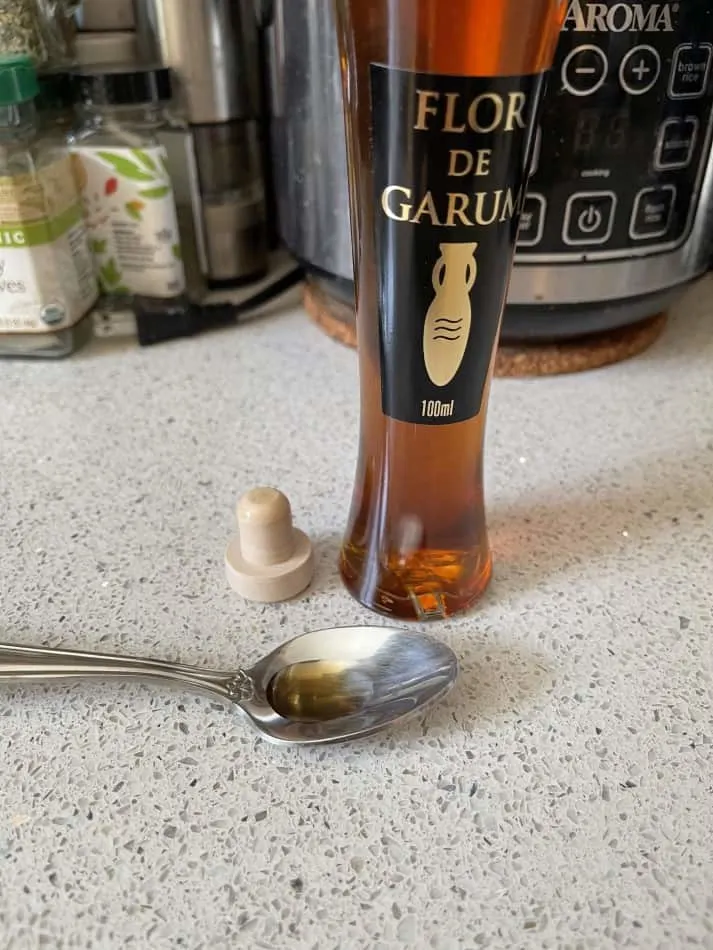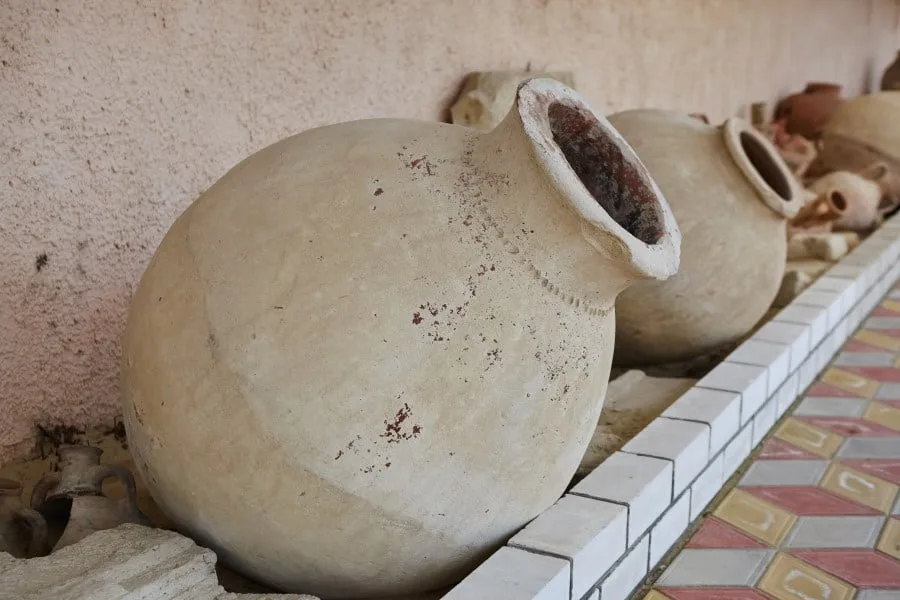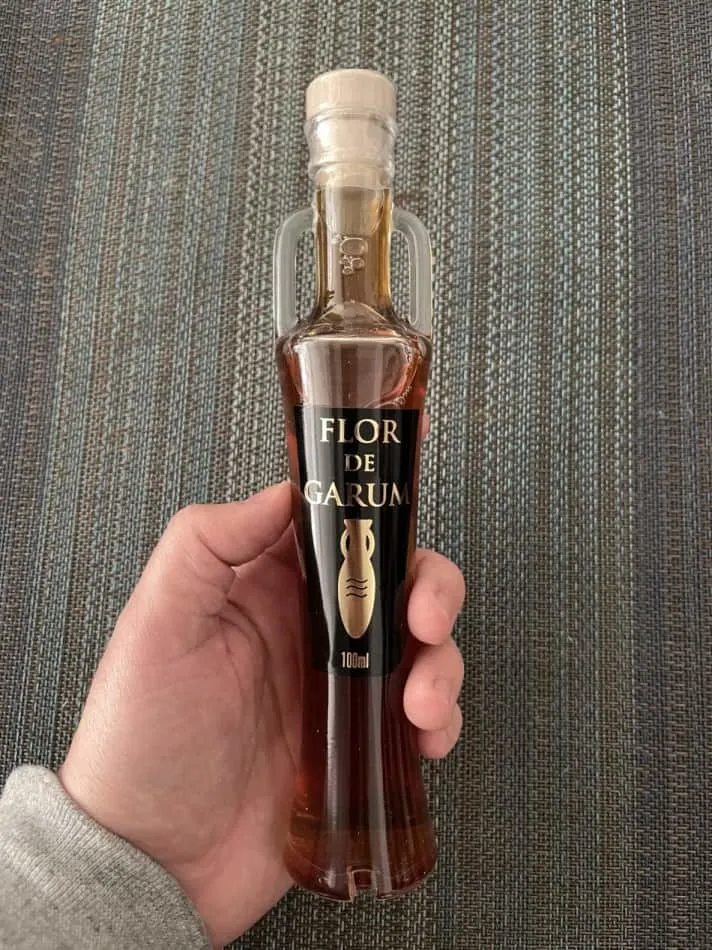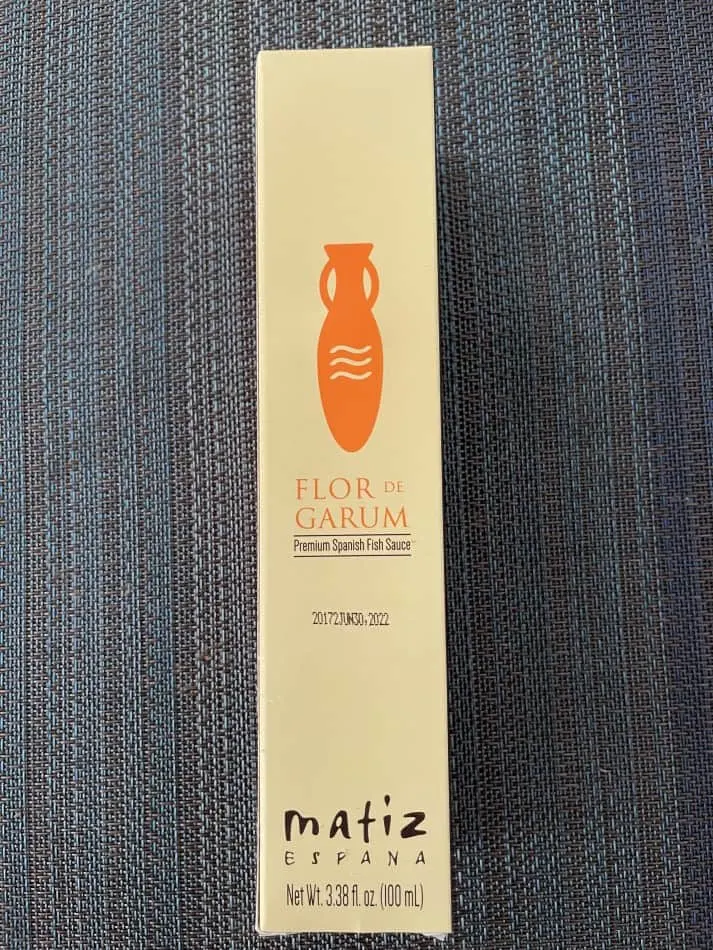For many readers, this might be the first you’ve heard about the once-famous condiment, Garum. However, back in the height of the Roman Empire, this was a common household ingredient much like ketchup is today, used across the Roman Cuisine. What exactly was this ancient condiment?
Garum is a fermented fish sauce used to enhance the flavor in a wide variety of classic Roman dishes. It became popular with the Roman elites as well as with regular people, and its popularity spread throughout the Mediterranean.
In this article, we will explore where exactly Garum came from as well as its taste and legacy. We will even see how it shows up in the world today and where you can try it for yourself.

What Is Garum?
Garum is a condiment that, at its simplest, was made with three key ingredients: fish, salt, and herbs. These were combined to spark a fermentation process, and the result was a tasty sauce that could be quite versatile in its uses.
Who Invented Garum?
It is no doubt that the Romans brought Garum to its height of popularity. However, its origins most likely predate the Roman Empire. There is evidence that the Greeks and Phoenicians were also cooking with this pungent sauce before the Romans. Archeologists have discovered shipwrecks from as far back as 5 B.C. that contain evidence of this sauce.
It likely took its name from the Greek pronunciation of “shrimp,” giving more evidence of its early origins. It went through many transformations since its initial creation, reflecting the social structure of the society at the time.
The quality of Garum at your table likely reflected your social class. For the upper class and elites, purchasing the finest quality Garum could be comparable to purchasing a designer perfume. There were factories that used only the best ingredients and were able to charge exorbitant prices for their top-of-the-line luxury product.
Likewise, the lower classes had their own ways of securing this salty sauce for their table. Allec was a paste made from what did not pass through the strainer when making Garum, and a version of this was often available at a much more affordable price to the lower classes.

What Does Garum Taste Like?
The taste of ancient Garum can be described as briny, brothy, and a bit fishy. Its flavor can also change slightly if it is paired with another ingredient, such as oil or vinegar. However, it is safe to say that Garum adds a salty flavor no matter what it is combined with. Additionally, it can bring the taste of umami as well, depending on what it is combined with.
The scent of this particular sauce can be on the strong side as well, and this scent can be held in the body much the same way we are familiar with the lingering smell of garlic well after we’ve eaten it.
Personal note: I recently purchased Flor de Garum, the Spanish Garum fish sauce made by Matiz Espana to try out. Oh my goodness, Garum has an extremely pungent flavor and smell. The golden-brown thin liquid smells very fishy, even fishier than Asian fish sauce. The flavor of this Garum is salty: umami like soy sauce, but fishy like anchovies.

What is Garum Made of and How is it Made?
Depending on the factory and the quality of Garum desired, the length of time needed to complete the production process would vary. All recipes call for fish or fish guts, salt, and lots of time, between 30 days and three months, to fully ferment. The ingredients were packed into special barrels that had been sealed on the inside to prevent any leakage or absorption of the precious ingredients fermenting inside. Let’s take a deeper look at a standard recipe of the Roman era:
3 Key Layers: Fish, Herbs and Spices, and Salt
Once the barrel had been prepared, it was time to begin adding the layers that would be locked in together to ferment. The first step was to lay down a layer of fish. Of course, the exact fish would depend on the recipe and what was available in the area. However, it was common to use fish such as tuna, mackerel, sardines, or anchovies. It was also possible that some other sea dwellers would get mixed in, prawn being a prime example of this.
Again, depending on the recipe, the fish could be laid in the barrel in their entirety. If they were particularly large, they would be cut into pieces. There was no big concern about bones or other hard bits of the fish since they would be drained out after the fermentation process was complete.
The second layer added on top of the fish would be herbs and spices. These would be responsible for seasoning the sauce and would vary based on the location and the recipe in use, but typically these would be dried before use in the fermentation process.
The third layer, consisting entirely of salt, would be responsible for regulating the fermentation of the fish. This was important to make sure they did not rot and become putrid. Each layer of salt had to be thick, approximately the thickness of two fingers. These three layers, fish, herbs, and salt would be repeated until the container was filled.
Fermentation and Straining
Once the barrel was filled, it was then placed out in the sun and heat for about a week, emitting a strong smell while doing so. During this time, the fish is slowly turning into liquid.
After about a week, they would slowly mix the layers together, doing this continuously over the course of 20 days. By the end of that period, a container full of a thick, fishy liquid would remain. Using a bucket and a straining cloth, this mixture would be drained, and the pure liquid that comes out on the other side of the strainer becomes the Garum sauce.
What is left behind in the straining process could be made into Allec. Allec is an affordable paste which tasted similar to Garum but was used mostly by the population who couldn’t afford the more desirable Garum.

What is Garum Used For?
Garum is used to enhance the flavor of a dish, and in Roman times, it really could be used to make just about any dish better. It became a staple of the Roman palette, almost like ketchup in the U.S.
It was a staple condiment among the upper class and could be used on its own or combined with another ingredient, such as oil, vinegar, wine, water, or black pepper.
It was also believed to have a range of medicinal properties and was commonly used to treat ailments in ancient Rome as well. Because the fish gave the sauce a substantial protein source, it was used to help regain the appetite of those struggling to eat as well as give a solution to a bout of dysentery.
Is Garum Still Used Today?
While Garum certainly faced a decline in popularity in the Mediterranean region as the Roman Empire fell, Garum-like fish sauces remains a staple in other parts of the world. Many Southeast Asian cuisines use fish sauce routinely in their preparations. In Vietnam, you will hear it referred to as “nước mắm,” while in Thailand, they call it “Nam Pla Prik.”

Can You Buy Garum Today?
If you visit any supermarkets with an international food aisle or have access to Asian markets, you will certainly be able to find fish sauces. It is less common to find ones coming from what used to be the Roman Empire, but it is not impossible.
In fact, a Spanish company called Matiz makes a specialty Garum Sauce that is made using the ancient Roman recipe. It can be found on Amazon and is a great way to have a taste of this famous ancient condiment.
Closing Thoughts
Although it may have lost its popularity over time, this ancient Roman condiment can still delight the palate. Seeking out a taste of Garum or another fishy equivalent will be not only an interesting culinary adventure but also a window into the past of how an ancient civilization added flavor to their meals.
